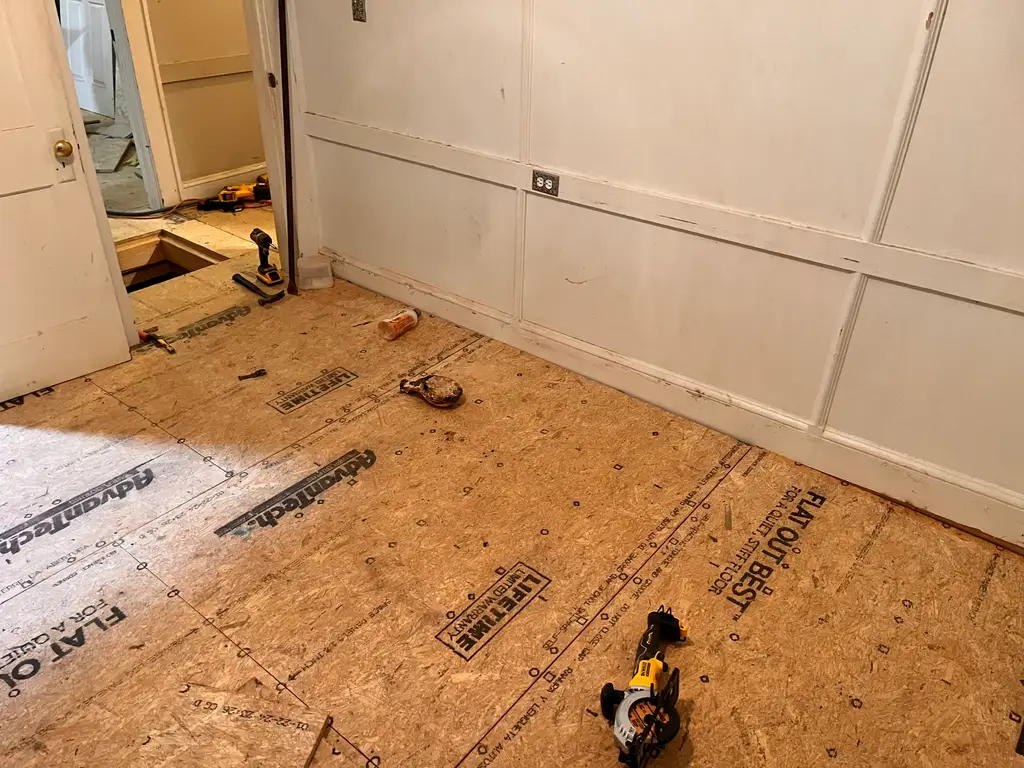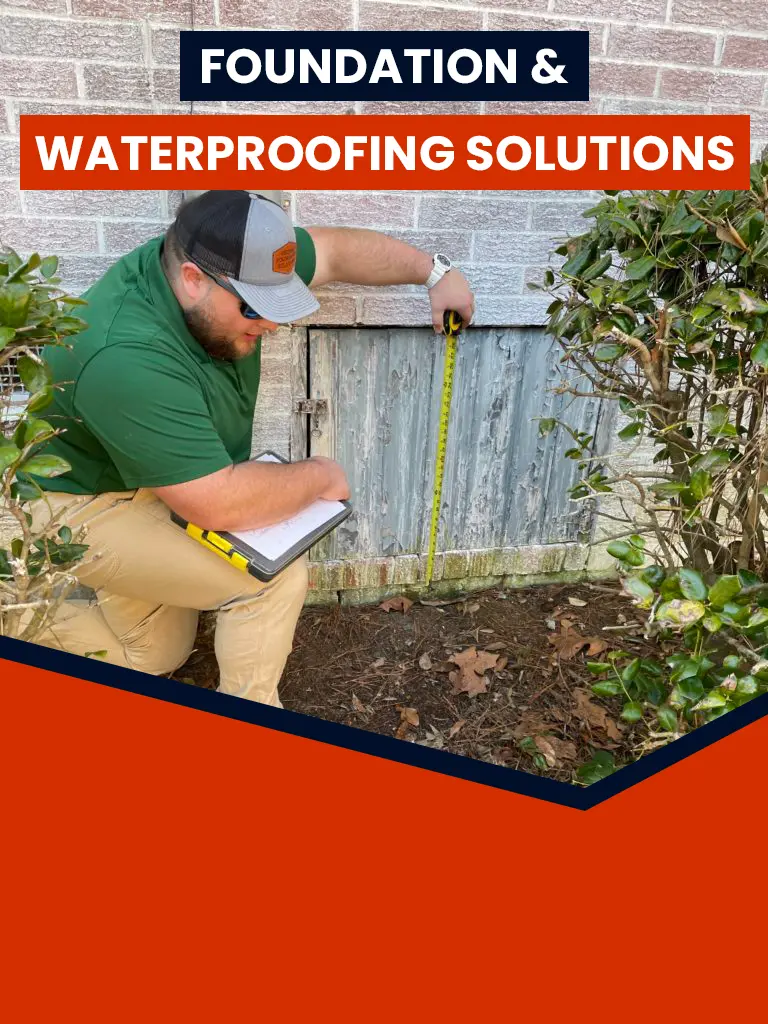Your home’s floor framing is the foundation that supports everything above it—walls, flooring, furniture, and people. However, over time, floor framing can suffer from damage due to various causes, including moisture, pests, and structural settling. Left untreated, damaged floor framing can compromise your home’s structural integrity, leading to sagging floors, uneven surfaces, and even safety hazards.
In this article, we’ll explore the most common causes of floor framing damage, how to identify issues, and the options available for floor framing repair to restore your home’s stability and safety.
Common Causes of Floor Framing Damage
Floor framing damage can occur for several reasons, and understanding the root cause is essential for determining the right repair method. Here are the most common causes:
1. Moisture and Water Damage
Moisture is one of the most common culprits behind floor framing damage. Water can seep into the structure from leaky pipes, flooding, poor drainage, or high humidity levels in crawl spaces and basements. Over time, exposure to moisture can cause wood rot, weakening the joists, beams, and subfloor, leading to sagging and soft floors.
Signs of moisture-related floor damage:
- Musty odors in the home
- Visible mold or mildew growth
- Warped or buckling floors
- Soft or spongy areas in the flooring
2. Termite and Pest Infestation
Termites and wood-destroying pests can wreak havoc on a home’s floor framing. These insects feed on wood, gradually hollowing out beams and joists. Termite damage is often hidden until it becomes severe, so it’s important to inspect crawl spaces and basements regularly.
Signs of pest damage:
- Hollow-sounding wood when tapped
- Visible tunnels in wooden beams
- Sagging or creaking floors
- Small piles of wood dust or termite droppings
3. Foundation Shifting and Settling
As your home’s foundation shifts or settles over time, it can place stress on the floor framing. Poor soil conditions, water infiltration, and inadequate foundation support can all contribute to uneven settling. This leads to cracks in walls, doors that don’t close properly, and uneven or sloping floors.
Signs of foundation-related floor framing damage:
- Uneven or sloping floors
- Cracks in walls, particularly around doors and windows
- Gaps between the floor and baseboards
- Doors that stick or don’t close properly
4. Wood Rot and Decay
Wood rot occurs when moisture is left untreated and leads to the decay of the wooden structure. This is particularly common in homes with high humidity levels or those that experience frequent flooding. Once wood rot sets in, it weakens the floor framing and must be replaced to maintain the structural integrity of the home.
Signs of wood rot:
- Dark, discolored wood
- Crumbling or soft areas in the wood
- Foul odors
- Visible damage to the joists or beams
5. Improper Construction or Design
In some cases, the original floor framing may not have been constructed correctly, leading to issues down the line. Whether it’s inadequate support beams, improper spacing of joists, or the use of inferior materials, poor construction can result in floor damage over time.
Signs of improper construction:
- Sagging or bouncy floors
- Frequent floor creaks and squeaks
- Visible gaps between the subfloor and framing
Floor Framing Repair Options
Once you’ve identified the cause of your floor framing damage, it’s time to explore floor framing repair options. Floor framing repair methods can vary from simple fixes, like sistering joists, to more complex structural work. Addressing issues with a tailored floor framing repair plan ensures long-term stability. Depending on the severity of the damage, professional floor framing repair may be necessary to restore your home’s structural integrity.

1. Sistering Floor Joists
One of the most common floor framing repair techniques is sistering. This involves attaching new joists alongside the damaged ones to reinforce the structure. Sistering helps restore strength and stability to the floor without the need for a full replacement of the framing.
When to use sistering:
- Minor to moderate damage to joists, such as cracks or sagging
- Areas where moisture damage has been treated, but the wood still needs reinforcement
- Joists with termite damage that haven’t been completely compromised
2. Replacing Damaged Joists
In cases of severe water damage, wood rot, or termite infestation, it may be necessary to completely replace the damaged joists. This involves removing the compromised wood and installing new, pressure-treated lumber to restore the integrity of the floor framing.
When to replace joists:
- Significant structural damage from pests or rot
- Floors that are severely sagging or have lost their structural integrity
- Joists that can no longer support the load of the floor above
3. Subfloor Replacement
If moisture or pests have compromised not only the joists but also the subfloor (the layer of material beneath your flooring), subfloor replacement may be necessary. This involves removing the damaged subfloor and installing new plywood or oriented strand board (OSB) before reinstalling flooring materials like hardwood or tile.

When to replace the subfloor:
- Warped, spongy, or soft floors due to water damage
- Widespread mold growth or rot in the subfloor material
- Visible gaps or unevenness in the flooring
4. Foundation Repairs
If your floor framing damage is caused by foundation shifting or settling, it’s important to address the root cause by performing foundation repairs. This may include installing piers or supports to stabilize the foundation, leveling the home, or improving drainage to prevent future settling.
When to consider foundation repairs:
- Floors are uneven or sloping significantly
- Visible foundation cracks or sinking
- Recurring issues with doors, windows, or floors not aligning properly
5. Installing Crawl Space Supports
In crawl spaces, additional supports can be installed to help carry the load of the floor framing above. These supports, known as crawl space jacks or posts, are adjustable and provide extra stability to sagging or uneven floors.
When to install crawl space supports:
- Floors that are sagging or uneven
- Insufficient support in crawl spaces
- Preventative reinforcement for homes prone to moisture or settling issues
Floor Framing Repair Costs: What to Expect
The cost of floor framing repair can vary depending on the extent of the damage, the materials needed, and the location of the damage. Here are some general cost ranges to give you an idea of what to expect:
- Sistering floor joists: $100 to $300 per joist, depending on accessibility and material costs.
- Replacing damaged joists: $1,000 to $5,000 for multiple joists or full sections, depending on severity.
- Subfloor replacement: $500 to $3,000, depending on the size of the area and materials used.
- Foundation repairs: $3,500 to $10,000 or more, depending on the type of foundation work required.
- Crawl space support installation: $1,000 to $4,000, depending on the number of supports needed and the complexity of the installation.
Preventing Future Floor Framing Damage
Once you’ve repaired your floor framing, it’s essential to take steps to prevent future damage. Here are some tips to help keep your floor framing in top condition:
- Address moisture issues promptly: Fix leaky pipes, install proper drainage, and use dehumidifiers in crawl spaces and basements.
- Perform regular inspections: Check crawl spaces, basements, and areas around your home’s foundation for signs of water damage, pests, or structural shifts.
- Ensure proper ventilation: Improve airflow in areas prone to moisture, such as crawl spaces and attics, to prevent mold and rot.
- Pest control: Set up regular pest inspections to prevent termites and other wood-destroying insects from damaging your floor framing.
Conclusion: Floor Framing Repair for a Safe and Stable Home
Floor framing repair is critical to maintaining the structural safety and stability of your home. Whether you’re dealing with moisture damage, pests, or foundation issues, addressing these problems early is key to preventing more significant damage. With the right repair strategy and preventative measures, you can ensure your home’s floors remain strong and secure for years to come.
If you suspect floor framing repair is needed in your home, contact a professional for an inspection. Addressing floor framing repair promptly can prevent further structural issues. A trusted contractor specializing in floor framing repair can assess the damage and recommend the best repair plan. Don’t delay—schedule a consultation for floor framing repair today to ensure your home’s stability.

